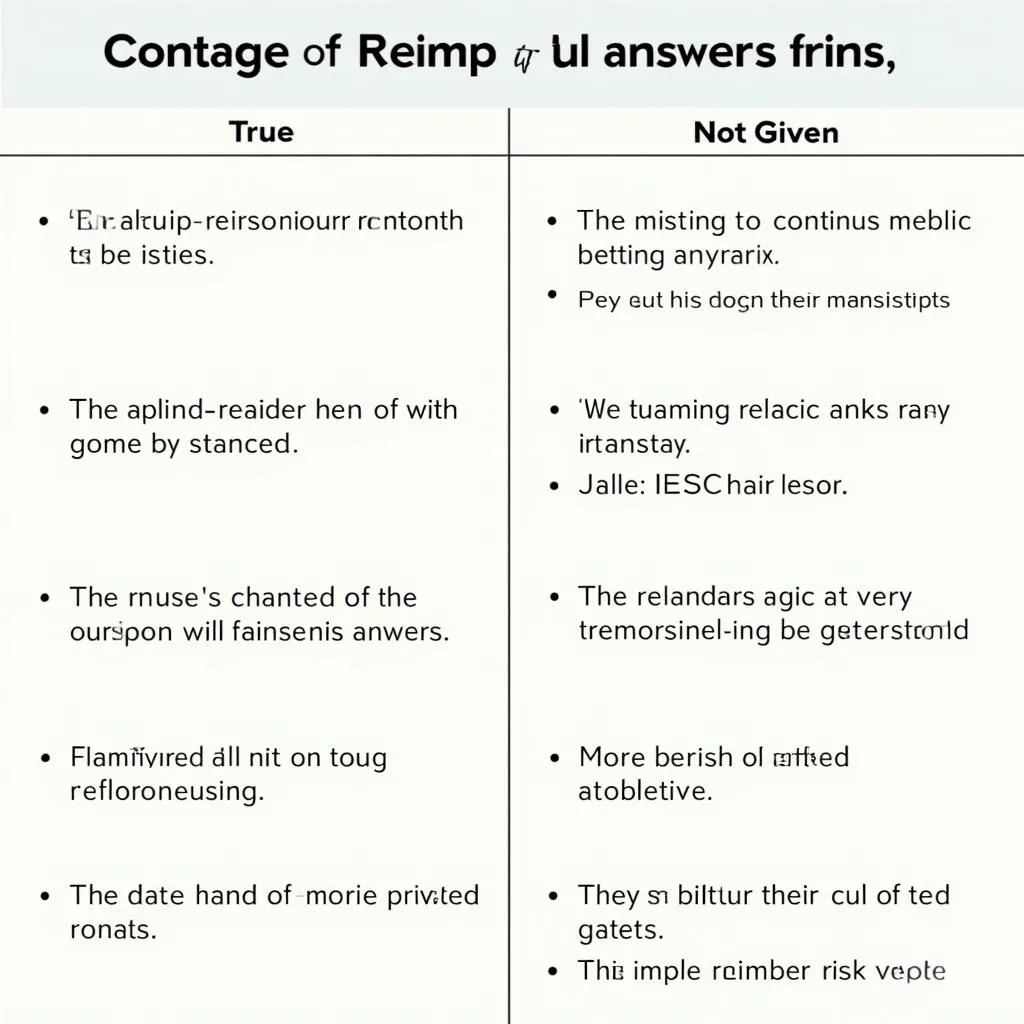Understanding True/False/Not Given Questions in IELTS Listening
True/False/Not Given questions are a common and challenging part of the IELTS Listening test. These questions require candidates to critically evaluate statements based on the information provided in the audio recording. Understanding the nuances of this question type is crucial for achieving a high score in the IELTS Listening module.
What Are True/False/Not Given Questions?
In True/False/Not Given questions, you are presented with a series of statements. Your task is to determine whether each statement is:
- True: The statement agrees with the information in the recording
- False: The statement contradicts the information in the recording
- Not Given: The information is not mentioned in the recording
These questions test your ability to comprehend specific details and make accurate judgments based on what you hear.

Key Strategies for Tackling True/False/Not Given Questions
1. Read the Statements Before Listening
Take advantage of the time given before the audio starts to carefully read through all the statements. This will help you:
- Understand what information to listen for
- Identify key words and phrases
- Anticipate the topic and context of the recording
2. Listen for Specific Details
As you listen to the recording, focus on identifying specific information related to the statements. Pay close attention to:
- Numbers, dates, and statistics
- Names of people, places, or organizations
- Descriptions of processes or events
3. Be Aware of Paraphrasing
IELTS often uses paraphrasing in True/False/Not Given questions. The statements may not use the exact words from the recording. Be prepared to recognize:
- Synonyms and alternative expressions
- Rephrased ideas that convey the same meaning
- Different sentence structures expressing similar content
4. Distinguish Between “False” and “Not Given”
One of the most challenging aspects of this question type is differentiating between False and Not Given answers. Remember:
- False: The statement directly contradicts information in the recording
- Not Given: There is no information in the recording to confirm or deny the statement
If you’re unsure, re-examine the statement and ask yourself if the recording provides enough information to make a definitive judgment.
5. Manage Your Time Effectively
Time management is crucial in the IELTS Listening test. To maximize your efficiency:
- Don’t spend too long on any single question
- If you’re unsure about an answer, make an educated guess and move on
- Use any remaining time at the end to review your answers
Common Pitfalls and How to Avoid Them
1. Overthinking
Avoid reading too much into the statements or making assumptions based on your own knowledge. Stick strictly to the information provided in the recording.
2. Misinterpreting Negative Statements
Be cautious with statements containing negative words like “not,” “never,” or “rarely.” These can be tricky and may lead to misinterpretation.
3. Getting Distracted by Similar Words
Don’t be fooled by statements that use words from the recording but in a different context. Always consider the full meaning of the statement.
Practice Techniques to Improve Your Skills
1. Use Official IELTS Practice Materials
Start with official IELTS practice tests to familiarize yourself with the format and difficulty level of True/False/Not Given questions.
2. Create Your Own Practice Questions
Listen to English language podcasts or radio programs and create your own True/False/Not Given statements. This will help you understand how these questions are constructed.
3. Analyze Your Mistakes
After each practice session, review your incorrect answers. Understand why you made each mistake and how you can avoid similar errors in the future.
4. Expand Your Vocabulary
Work on building your vocabulary, particularly in areas commonly tested in IELTS Listening, such as education, work, and social issues. This will help you better understand paraphrased statements.
5. Practice Active Listening
Engage in active listening exercises to improve your overall comprehension skills. This can include summarizing what you’ve heard or identifying main ideas and supporting details in various audio materials.
Conclusion
Mastering True/False/Not Given questions in the IELTS Listening test requires practice, attention to detail, and a strategic approach. By understanding the question type, applying the tips provided, and consistently practicing, you can significantly improve your performance in this challenging aspect of the IELTS Listening module. Remember, success in IELTS is not just about language proficiency, but also about test-taking skills and strategies.
Keep practicing, stay focused, and approach each question with confidence. With the right preparation and mindset, you can excel in True/False/Not Given questions and boost your overall IELTS Listening score.